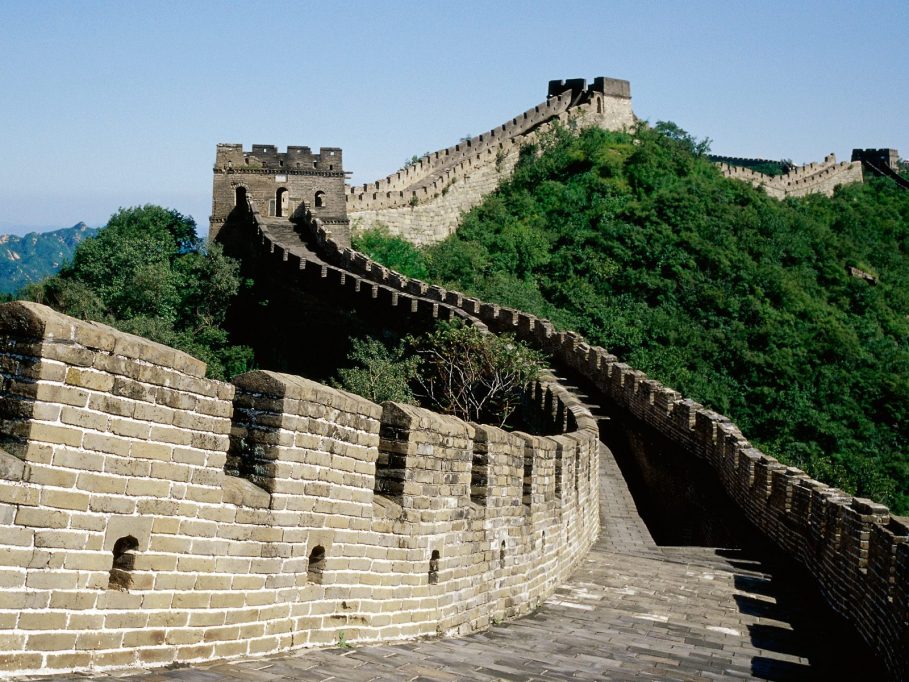The Great Wall of China is the longest man-made structure in the world.

It is not a single wall. Several walls were being built as early as the 7th century BCE, which later joined together and made bigger and stronger, are now collectively referred to as the Great Wall.
The Great Wall of China has on and off been rebuilt, maintained, and enhanced; the majority of the existing wall is from the Ming Dynasty.
The Great wall of China is made of stone, brick, tamped earth, wood, and other material.
The structure is seen generally built along an east-to-west line across the historical northern borders of China, to protect the Chinese states and empires against the raids and invasions of the various nomadic groups of the Eurasian Steppe.
Other purposes of the Great Wall have included border controls, allowing the imposition of duties on goods transported along the Silk Road, regulation or encouragement of trade and the control of immigration and emigration.
Defensive characteristics of the Great Wall were enhanced by the construction of watch towers, troop barracks, garrison stations, signaling capabilities through the means of smoke or fire.
The path of the Great Wall also served as a transportation corridor.
The Chinese invented the wheelbarrow and used it extensively in building the Great Wall.
The Ming walls measure 8,850 km. This is made up of 6,259 km sections of actual wall, 359 km of trenches and 2,232 km of natural defensive barriers such as hills and rivers.Another archaeological survey found that the entire wall with all of its branches measure out to be 21,196 km.
The highest point of the Great Wall is in Beijing at Heita Mountain (5,033 feet/1,534 meters). The lowest point is at Laolongtou (sea level).
Contrary to common belief, the Great Wall of China cannot be seen from the moon without aid.